Introduction to Lily of the Valley
Lily of the valley, or Convallaria majalis, is not just a plant; it embodies a rich tapestry of history, symbolism, and ecological significance that transcends its delicate beauty. This woodland flowering plant, characterized by its sweetly scented, bell-shaped white flowers, has persisted through centuries as both an emblem of elegance and a harbinger of spring.
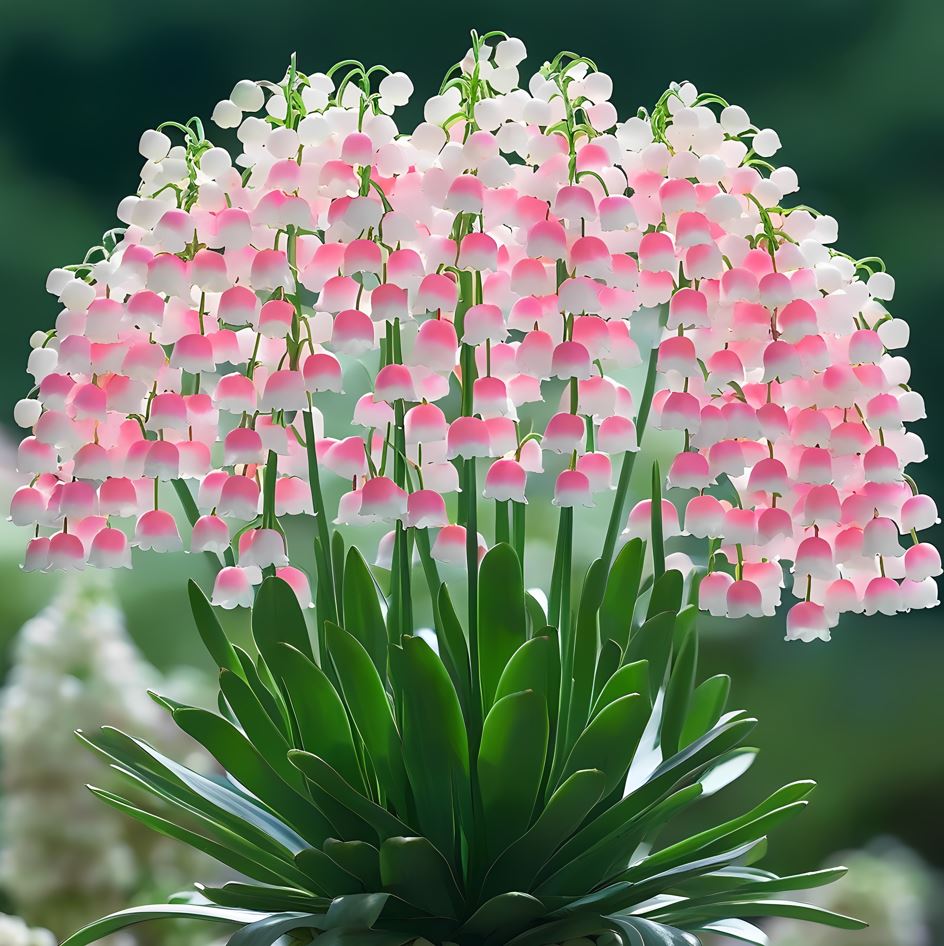
From a botanical perspective, lily of the valley is a rhizomatous perennial in the Asparagaceae family, showcasing an impressive resilience as it flourishes in shaded areas across Eurasia. This ability to thrive in less-than-ideal conditions speaks to its adaptability, much like the human spirit when faced with challenges. It invites us to reflect on our own resilience—when we encounter obstacles, are we not also capable of blossoming where we are planted? Moreover, the enchanting fragrance of lily of the valley makes it a sought-after choice for gardens and floral arrangements alike.
The lore surrounding this flower, often associated with purity and humility, highlights its duality: while it exudes charm and grace, it conceals a toxic nature beneath its fragile exterior. This juxtaposition can evoke thoughts about beauty itself—how often do we dismiss the hidden complexities within something that appears simple and innocent? Such reflections can encourage a more profound appreciation for the intricacies of life around us.
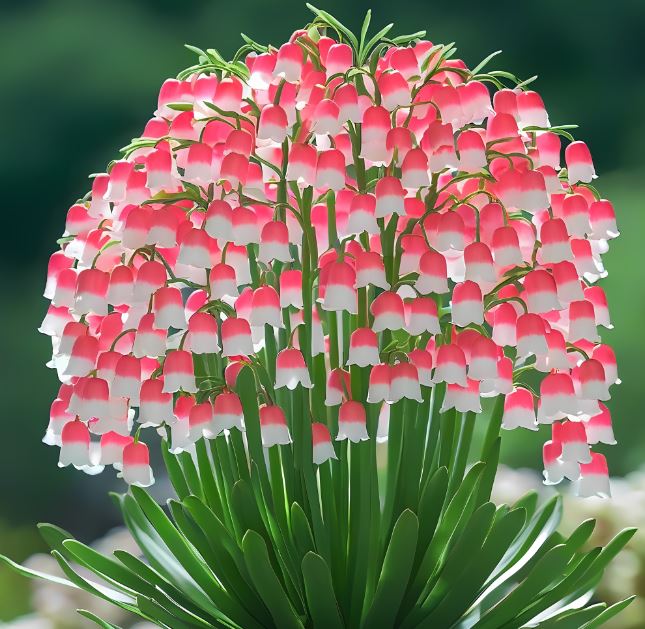
The cultivation and care of lily of the valley require a nuanced understanding of its needs, drawing parallels with personal growth and nurturing relationships. Just as these flowers thrive in well-drained soil and appropriate light, our own development is contingent upon the environments we choose to nurture. For gardeners, this means cultivating not only the right physical space but also the emotional resonance necessary for fostering healthy growth. Engaging in practices such as planting them in clusters can create a more dramatic display, akin to how mutual support among individuals can amplify collective strength.
Furthermore, considering the ecological implications, lily of the valley serves as an essential component of its habitat, contributing to the biodiversity that sustains forest ecosystems. Its presence can influence the dynamics between various species, highlighting the interconnectedness of all living things. In a world increasingly concerned with environmental degradation, reflecting on plants like lily of the valley can remind us of our role in preserving the delicate balance of nature. These small, seemingly inconspicuous flowers have the power to inspire larger conversations about conservation and stewardship.
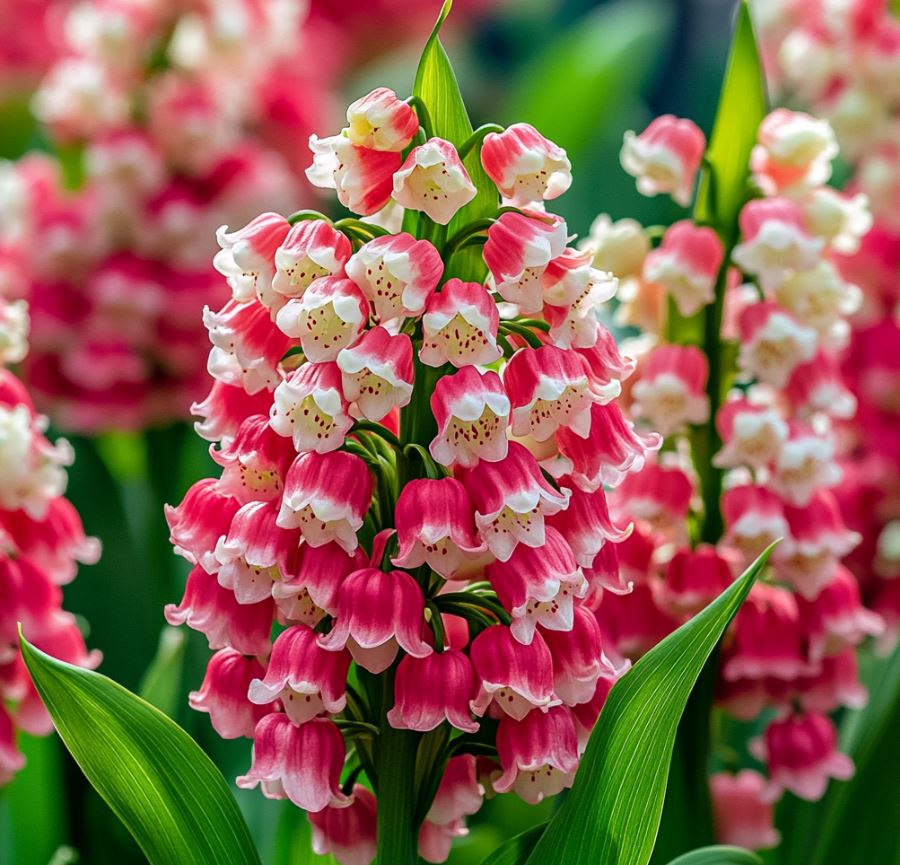
In summary, lily of the valley is more than just a floral marvel; it encapsulates themes of resilience, beauty with complexity, and interconnectedness in nature. As we appreciate its aesthetic allure, let us also consider what it reveals about our own lives and the environments we inhabit. It encourages us to find beauty in the ordinary, embrace resilience in adversity, and recognize our place within a broader ecological narrative.
Historical Significance and Cultural References
The Enigmatic History of Lily of the Valley
Lily of the valley has a rich and intriguing history that spans centuries, with references to the flower appearing in various cultures and traditions around the world. Its origins can be traced back to the temperate regions of Europe and Asia, where it has been revered for its delicate beauty and enchanting fragrance.
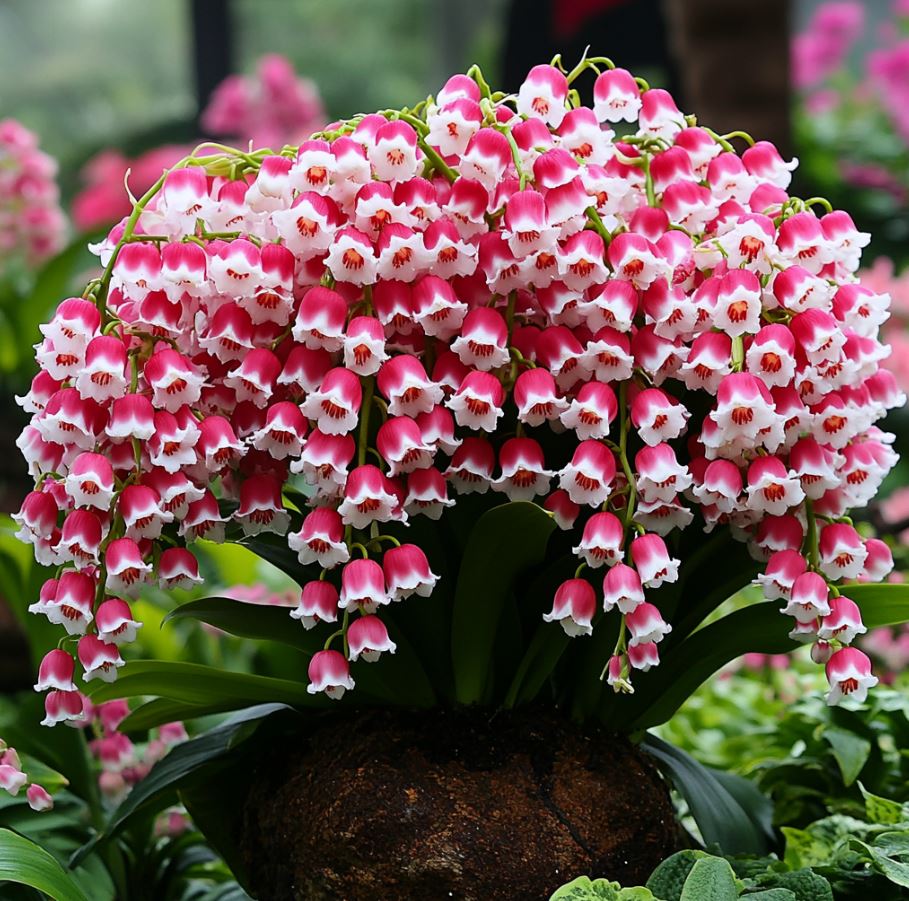
One of the earliest known references to lily of the valley can be found in ancient Greek and Roman texts, where it was associated with the gods and goddesses of fertility, spring, and renewal. The flower’s association with purity and humility also made it a popular symbol in early Christian traditions, often adorning churches and religious ceremonies.
Symbolic Representations in Literature and Art
Throughout history, lily of the valley has captured the imagination of artists, writers, and poets, who have woven its symbolism into their creative works. In literature, the flower has been used to represent everything from the innocence of childhood to the fragility of life itself. Shakespeare, for example, famously referenced lily of the valley in his play “The Winter’s Tale,” where the flower is used to symbolize the return of spring and the hope for renewal.
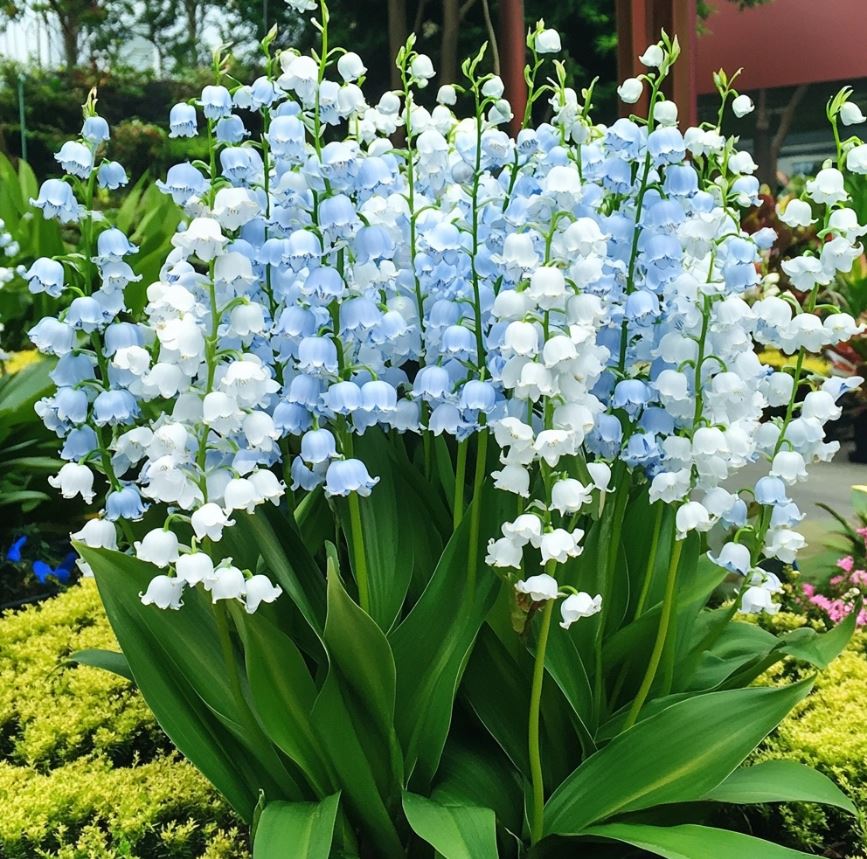
In the visual arts, lily of the valley has been depicted in paintings, tapestries, and decorative objects, often as a symbol of purity, fertility, and the arrival of spring. The delicate, bell-shaped blooms have been a source of inspiration for artists across a wide range of media, from intricate botanical illustrations to abstract expressionist paintings.
Folklore and Traditions Surrounding the Flower
The rich cultural history of lily of the valley is further reflected in the various folklore and traditions that have developed around the flower. In some European traditions, it is believed that the tears of the Virgin Mary, shed as she watched her son’s crucifixion, gave rise to the first lily of the valley plants. In other cultures, the flower is associated with the return of happiness and the end of sorrow.
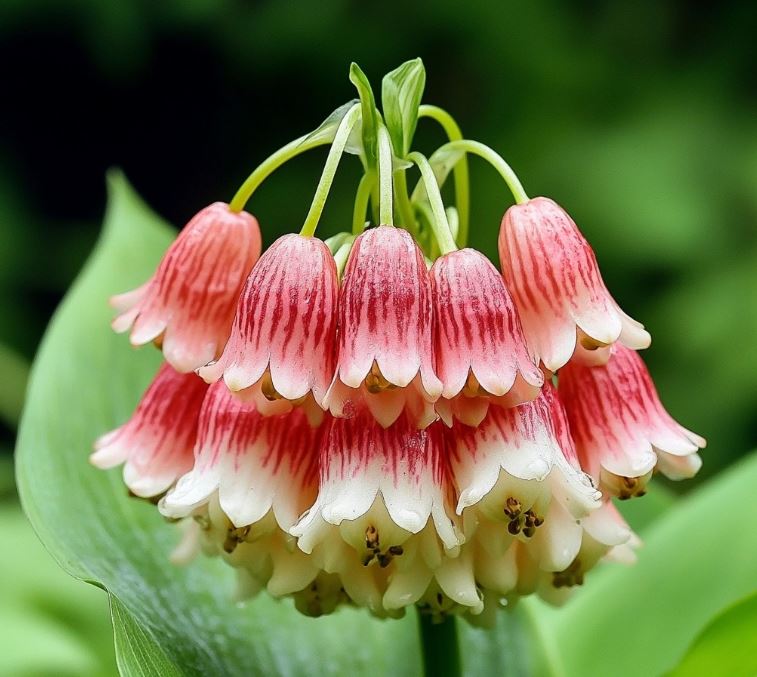
The significance of lily of the valley has also been celebrated through various festivals and rituals, such as the Lily of the Valley Festival in France, which honors the flower’s connection to the changing of the seasons and the arrival of spring. Similarly, the flower has been used in traditional herbal medicine practices, with its leaves and roots being utilized for their purported medicinal properties.
Overall, the historical and cultural significance of lily of the valley speaks to its enduring appeal and the deep-seated human connections that have formed around this enigmatic and enchanting flower.
Botanical Characteristics: Unveiling the Mystique of Convallaria majalis
Description and Identification
Lily of the valley, or Convallaria majalis, is a delicate and captivating perennial plant that belongs to the Asparagaceae family. Its distinctive features include:
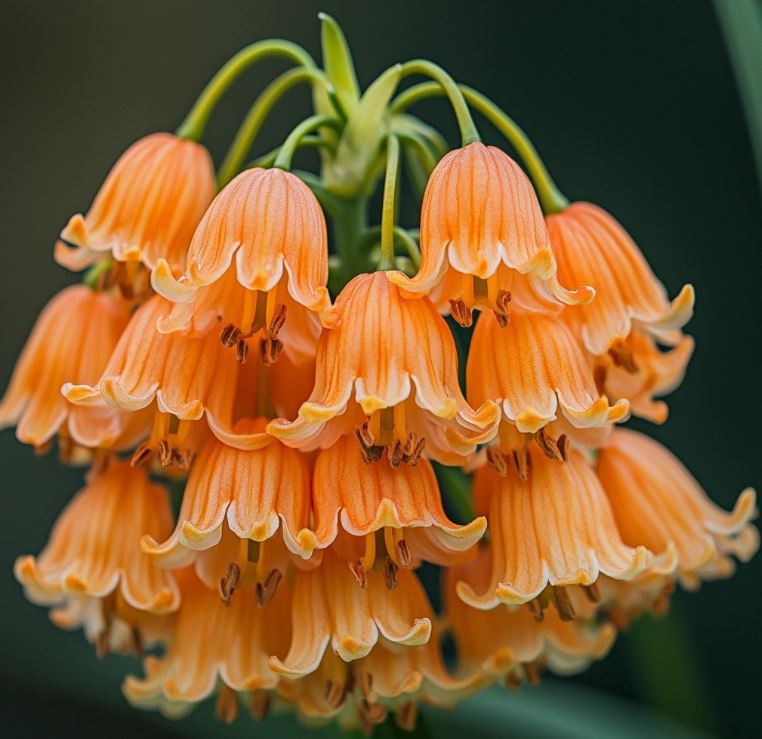
- Slender, arching stems that can reach up to 15 inches (38 cm) in height
- Glossy, lance-shaped leaves that are bright green in color and arranged in pairs along the stem
- Dainty, bell-shaped flowers that are typically white or pale pink in color and emit a sweet, floral fragrance
- Tiny, red berries that develop after the flowers have bloomed
One of the key identifying features of lily of the valley is its unique growth pattern, with the plant spreading through underground rhizomes to form dense, carpet-like colonies in its natural habitat.
Life Cycle and Growth Patterns
Lily of the valley is a perennial plant, meaning it can live for multiple years and return each spring with new growth. The plant’s life cycle is closely tied to the changing of the seasons, with the flowers typically blooming in late spring or early summer, followed by the development of the red berries in the summer months.
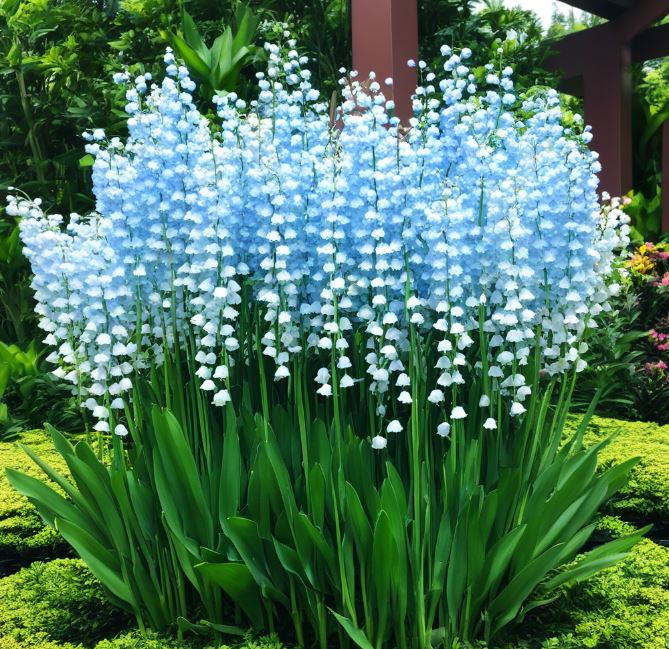
The plant’s growth pattern is characterized by the expansion of its rhizome system, which allows it to spread and colonize new areas over time. Each year, the plant will produce new aerial stems and leaves, as well as new underground rhizome growth, ensuring its continued survival and expansion.
Habitat and Distribution
Lily of the valley is native to the temperate regions of Europe and Asia, where it can be found growing in shaded, moist environments such as deciduous forests, woodland clearings, and along stream banks. The plant is known to thrive in areas with well-drained, nutrient-rich soil and partial shade, often forming dense, carpeted groundcovers in its preferred habitats.
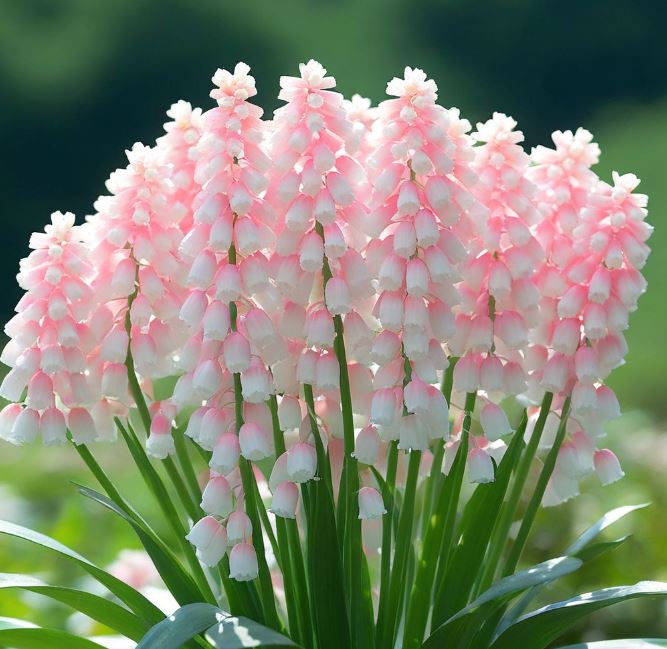
While the plant’s native range is primarily concentrated in Europe and Asia, lily of the valley has been introduced to other parts of the world, including North America, where it has become naturalized in some areas. Its ability to adapt to a variety of growing conditions has contributed to its widespread distribution and popularity as a garden plant.
Through a deeper understanding of the botanical characteristics and growth patterns of lily of the valley, we can better appreciate the complexity and resilience of this enigmatic plant, and how it continues to captivate and inspire us with its timeless beauty.
Symbolism and Cultural Meaning
Representation in Literature and Art
Lily of the valley has long been a source of inspiration for artists, writers, and poets, who have incorporated the flower’s symbolic meaning and enchanting qualities into their creative works. In literature, the flower has been used to represent themes of purity, innocence, and the fleeting nature of life.
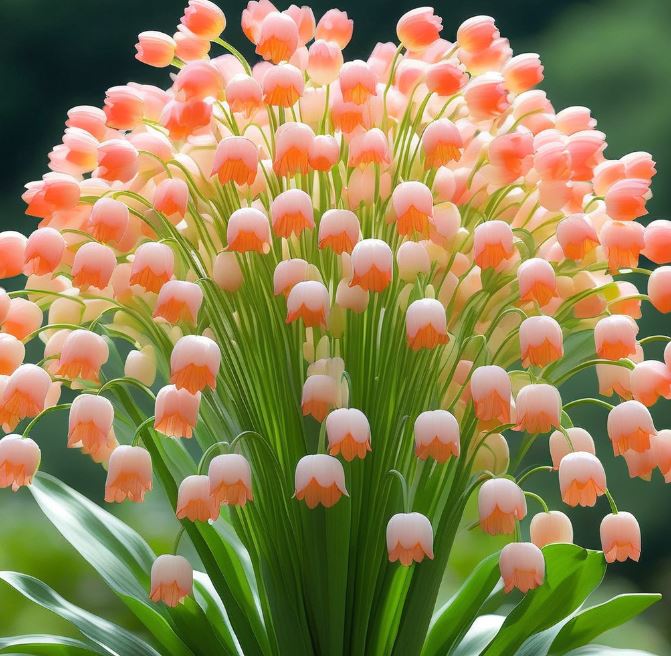
One of the most famous literary references to lily of the valley can be found in Shakespeare’s play “The Winter’s Tale,” where the flower is used as a symbol of the return of spring and the hope for renewal. Similarly, in the poetry of Emily Dickinson, lily of the valley is often employed as a metaphor for the fragility of human existence and the transience of beauty.
In the visual arts, lily of the valley has been depicted in a wide range of media, from delicate botanical illustrations to abstract expressionist paintings. The flower’s elegant form and delicate beauty have made it a popular subject for artists, who have sought to capture the essence of its allure and symbolism.
Associations with Purity and Humility
One of the most enduring symbolic associations of lily of the valley is its connection to purity and humility. The flower’s delicate, bell-shaped blooms and its ability to thrive in shaded, understated environments have contributed to its reputation as a symbol of innocence and modesty.
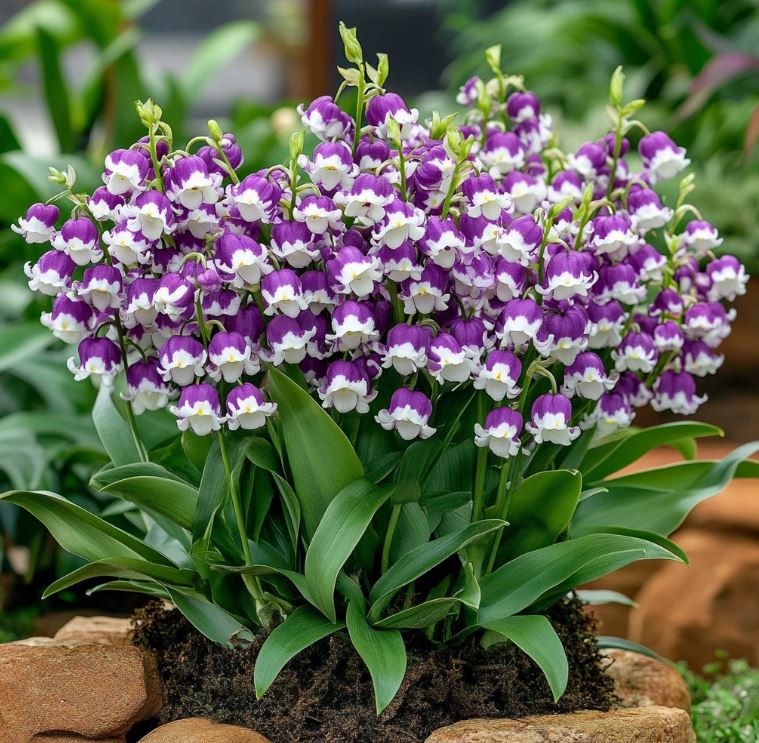
This association with purity has led to the flower’s use in various religious and cultural traditions, where it has been incorporated into rituals and ceremonies as a symbol of spiritual cleanliness and devotion. In Christian traditions, for example, lily of the valley is often used to adorn churches and is associated with the Virgin Mary, who is sometimes depicted with the flower as a symbol of her purity and grace.
Folklore and Traditions
The symbolic significance of lily of the valley has also given rise to a rich tapestry of folklore and traditions surrounding the flower. In some European cultures, it is believed that the first lily of the valley plants sprang from the tears of the Virgin Mary, shed as she watched her son’s crucifixion.
Similarly, in parts of Asia, the flower is associated with the return of happiness and the end of sorrow, with its delicate blooms being seen as a harbinger of joy and renewal. This connection to the changing of the seasons and the cyclical nature of life has led to the development of various festivals and rituals that celebrate the arrival of lily of the valley and the transition into spring.
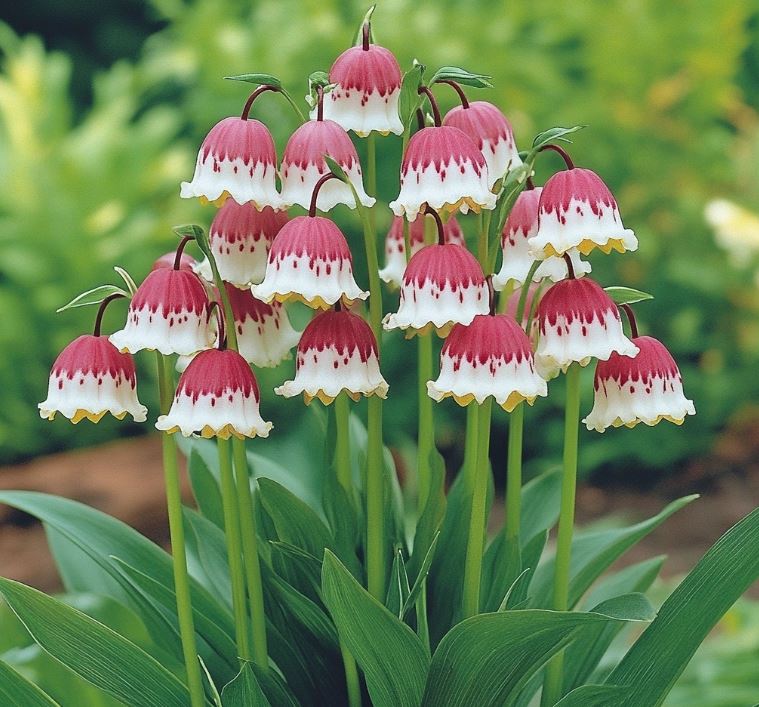
Through its enduring presence in literature, art, and cultural traditions, lily of the valley has become a symbol that transcends its physical form, serving as a potent reminder of the power of beauty, the fragility of life, and the enduring connections between the natural and the spiritual worlds.
Ecological Overview of Convallaria majalis
Role in Forest Ecosystems
Lily of the valley plays a crucial role in the delicate balance of forest ecosystems, serving as an essential component of the understory vegetation that thrives in the shaded, moist environments of temperate woodlands. As a rhizomatous perennial, the plant’s dense, carpet-like growth patterns help to stabilize the soil, prevent erosion, and provide a habitat for a variety of small animals and invertebrates.
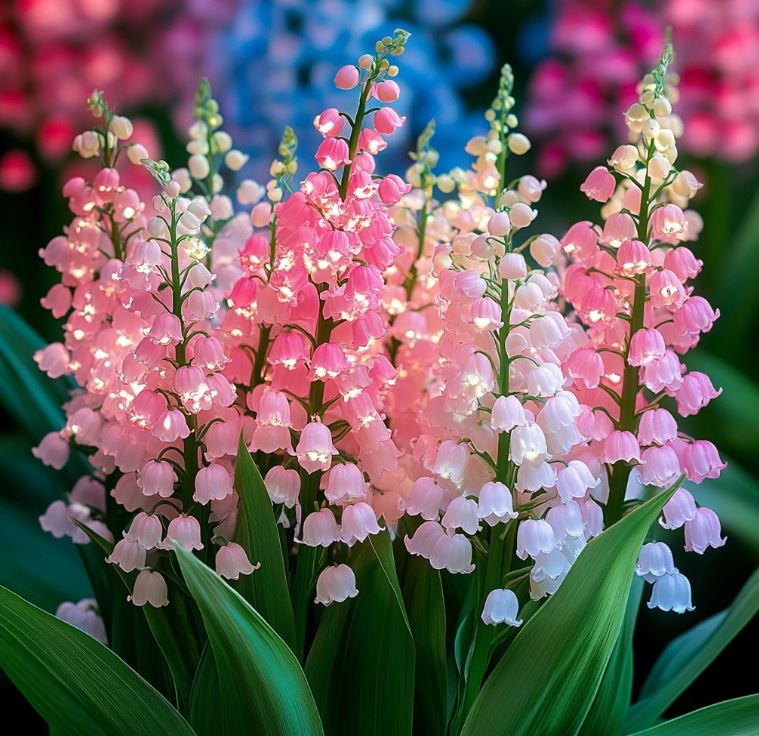
Moreover, the plant’s nectar-rich flowers attract a diverse array of pollinators, including bees, butterflies, and moths, which are essential for the reproduction and dispersal of the plant itself, as well as the overall health of the surrounding ecosystem. The red berries that develop after the flowers have bloomed also serve as a food source for birds and small mammals, further contributing to the intricate web of interactions that sustain the forest environment.
Contributions to Biodiversity
The presence of lily of the valley in forest ecosystems can have a significant impact on the overall biodiversity of the habitat, serving as a foundation for the complex and interconnected relationships between various plant and animal species.
As a shade-tolerant, understory plant, lily of the valley provides a critical food source and habitat for a variety of small invertebrates, such as snails, slugs, and insects, which in turn support the larger predators and scavengers that rely on these organisms for sustenance. Additionally, the plant’s ability to spread and colonize new areas through its rhizome system can help to create a diverse mosaic of microhabitats, each with its own unique set of species and adaptations.
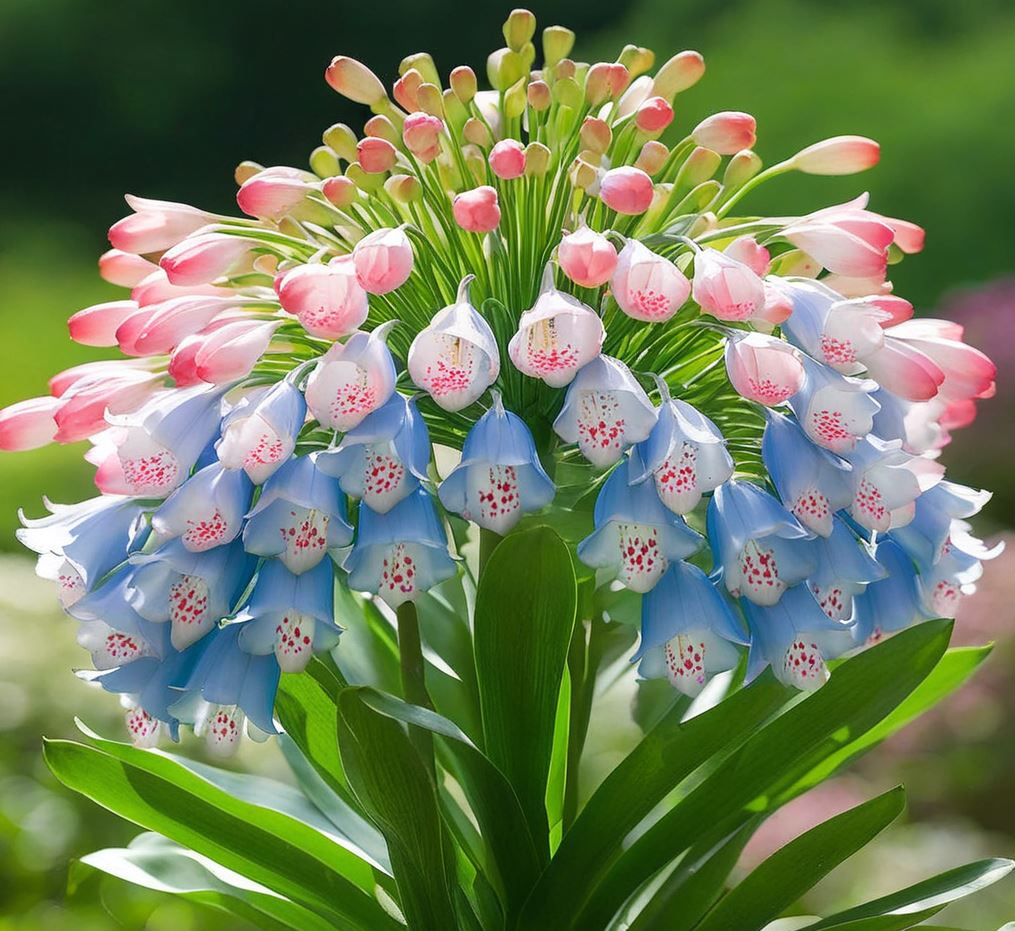
Furthermore, the presence of lily of the valley can influence the dynamics of larger plant communities, as its growth and spread can both facilitate and inhibit the establishment of other understory species, depending on the specific environmental conditions and competition within the ecosystem.
By understanding the ecological significance of lily of the valley, we can gain a deeper appreciation for the interconnectedness of all living things and the crucial role that even the most seemingly inconspicuous plants play in maintaining the delicate balance of our natural world.
Toxicity and Caution
Understanding the Poisonous Nature
While lily of the valley is renowned for its beauty and fragrance, it is important to recognize that the plant is, in fact, highly toxic to both humans and animals. All parts of the plant, including the leaves, flowers, and berries, contain cardiac glycosides, which can be dangerous if ingested.

The toxins present in lily of the valley can cause a wide range of symptoms, from nausea and vomiting to irregular heartbeat and even cardiac arrest in severe cases. The plant’s toxic nature is a testament to the complex and often hidden facets of the natural world, reminding us that even the most exquisite of flowers can conceal a dangerous reality beneath their delicate exteriors.
Symptoms of Ingestion and Safety Precautions
If ingested, even small amounts of lily of the valley can result in serious and potentially life-threatening symptoms, including:
- Gastrointestinal issues, such as nausea, vomiting, and diarrhea
- Cardiac disturbances, including irregular heartbeat, low blood pressure, and heart palpitations
- Neurological effects, such as headaches, dizziness, and confusion
Due to the plant’s toxic nature, it is essential to exercise caution when handling and cultivating lily of the valley, particularly in areas where children or pets may be present. Proper safety measures, such as wearing gloves and avoiding skin contact, should always be taken when working with the plant.

Taxonomy and Classification
From a botanical perspective, lily of the valley belongs to the Asparagaceae family, which includes a diverse range of plants, many of which are known for their medicinal or toxic properties. The plant’s scientific name, Convallaria majalis, reflects its classification within the genus Convallaria, which is derived from the Latin words “convallis,” meaning “valley,” and “majalis,” meaning “of May,” in reference to the plant’s typical blooming season.
Understanding the toxic nature of lily of the valley and its proper classification within the plant kingdom is crucial for gardeners, horticulturists, and nature enthusiasts alike, as it helps to inform safe handling practices and ensures the wellbeing of both people and pets who may come into contact with this enigmatic and beautiful, yet potentially dangerous, plant.
Cultivation and Care
Ideal Growing Conditions
Lily of the valley thrives in a specific set of environmental conditions, which gardeners and growers must carefully consider when cultivating this enchanting plant. The plant prefers:

- Well-drained, humus-rich soil with a slightly acidic to neutral pH
- Partial to full shade, as it is not tolerant of direct, intense sunlight
- Consistently moist, but not waterlogged, soil conditions
- Sheltered, woodland-like environments that mimic the plant’s natural habitat
By replicating these ideal growing conditions, gardeners can create the optimal conditions for lily of the valley to thrive and spread, forming the lush, carpet-like displays that have made the plant a beloved addition to many gardens.
Soil Requirements and Drainage
Lily of the valley is particularly sensitive to soil conditions, requiring a well-drained, nutrient-rich medium to flourish. The plant’s rhizome system can be vulnerable to rot and disease if the soil remains too wet for prolonged periods, so ensuring adequate drainage is crucial.
Gardeners can amend their soil by incorporating organic matter, such as compost or well-rotted leaf litter, to improve its nutrient content and water-holding capacity. Additionally, planting lily of the valley in raised beds or on gently sloping areas can help to improve drainage and prevent waterlogging.

Light and Shade Preferences
As a woodland plant, lily of the valley prefers partial to full shade, as it is not tolerant of direct, intense sunlight. In areas with too much light, the plant’s delicate foliage and flowers may become scorched or discolored, and its growth and flowering may be inhibited.
When selecting a planting site, gardeners should look for areas that receive a few hours of direct sunlight in the morning or evening, but are shaded for the majority of the day. Dappled shade, such as that provided by the canopy of deciduous trees, can also be an ideal environment for lily of the valley.
Watering Needs and Maintenance
Maintaining consistently moist, but not waterlogged, soil is crucial for the health and longevity of lily of the valley. The plant’s rhizome system is sensitive to both drought and excess moisture, so gardeners should water the plants regularly, especially during periods of hot, dry weather.
In addition to watering, lily of the valley requires minimal maintenance. Deadheading spent flower stems can help to tidy the plant’s appearance and encourage the development of new blooms. Dividing the rhizomes every few years can also help to rejuvenate older plantings and promote continued growth and spread.

By understanding and providing the specific growing conditions and care requirements of lily of the valley, gardeners can ensure the long-term success and vibrant display of this enchanting and enigmatic plant.
Propagation Techniques
Division of Rhizomes
One of the most effective ways to propagate lily of the valley is through the division of its rhizomes, the underground stems that allow the plant to spread and colonize new areas. This method is particularly useful for gardeners who want to expand their existing plantings or share the plant with others.
To divide the rhizomes, gardeners should carefully dig up the plant in the fall or early spring, when the plant is not actively growing. The rhizomes canbe gently separated with a sharp garden spade or knife, ensuring that each division has at least one healthy bud. After dividing, the rhizomes should be replanted immediately at the same depth as they were originally growing to encourage successful establishment in their new location.
This method of propagation not only helps to control the spread of lily of the valley in gardens but also allows for the rejuvenation of existing plantings, promoting healthier growth and more abundant flowering in the years to come.

Seed Planting and Germination
While division is the most common method of propagating lily of the valley, it is also possible to grow the plant from seeds, although this process is typically less efficient and takes longer to yield flowers. Seeds can be collected from mature plants after flowering; however, they require a period of cold stratification to germinate properly.
To start the seed germination process, seeds should be sown in early spring or fall in a prepared seedbed with well-drained soil. The seeds are generally sown just below the surface and lightly covered with soil. It’s important to keep the soil consistently moist during the germination period, which may take several weeks to months depending on the conditions and the age of the seeds. Once seedlings emerge, they should be thinned out to ensure adequate spacing as they develop into mature plants.
Growing lily of the valley from seed can be a rewarding experience, but gardeners should be patient, as it can take several years for seedlings to mature and produce flowers.
Best Practices for Successful Growth
Regardless of the method of propagation chosen, certain best practices can enhance the likelihood of success when cultivating lily of the valley. This includes ensuring proper care during the initial establishment phase. Newly divided rhizomes or seedlings should be watered regularly to promote root development and resilience, especially during dry spells.
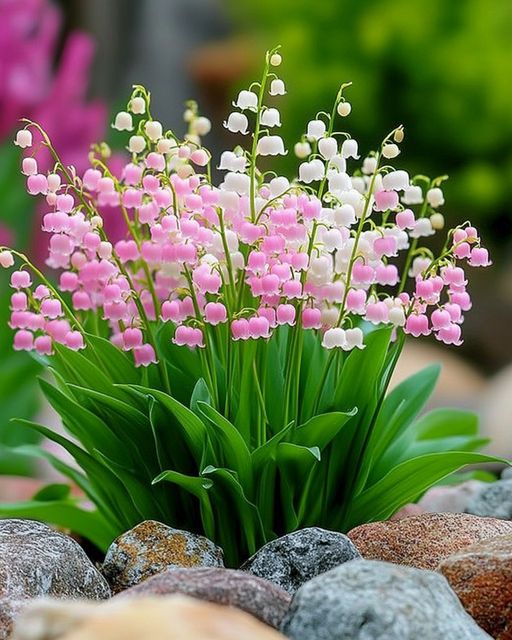
Additionally, mulching around the base of the plants can help retain moisture, suppress weeds, and regulate soil temperature. A layer of organic mulch—such as shredded bark or leaf litter—can also mimic the plant’s natural woodland habitat, creating an ideal microenvironment for growth.
Finally, patience is key when cultivating lily of the valley, as the plants may take time to establish and fully flourish. With the right care and attention, gardeners can enjoy the beauty and fragrance of this enchanting flower for many seasons to come.
Creative Uses in Gardening
Designing Floral Arrangements
Lily of the valley is often beloved for its exquisite blooms and sweet fragrance, making it a popular choice for floral arrangements. Its delicate white flowers, which dangle like tiny bells, add a touch of elegance and charm to any bouquet. When used in arrangements, lily of the valley pairs beautifully with other spring flowers such as peonies, tulips, and ranunculus, creating a harmonious and visually appealing display.
However, due to its toxic nature, it is essential for florists and hobbyist arrangers to handle lily of the valley with caution. Wearing gloves while working with these flowers can prevent any skin irritation and avoid accidental ingestion, especially in households with small children or pets.
Incorporating into Landscape Design
In landscape design, lily of the valley can be used effectively as ground cover in shaded areas, providing a lush, green backdrop for other plants. The way it spreads through rhizomes allows it to fill in spaces quickly, creating a carpet-like effect that can transition beautifully between larger shrubs or trees.
When planning a garden, placing lily of the valley near paths or seating areas allows passersby to enjoy its delightful fragrance, enhancing the sensory experience of the outdoor space. Additionally, since it thrives under the canopy of trees, incorporating it into woodland gardens or shady nooks can create a picturesque, serene environment.
Companion Planting Considerations
Lily of the valley can be an excellent companion plant for various other species, especially those that thrive in similar shady conditions. Some suitable companions include ferns, hostas, and astilbes, all of which share a preference for moist, rich soil and partial shade. By planting these species together, gardeners can create diverse and low-maintenance plantings that provide visual interest throughout the growing season.
It’s crucial, however, to consider the spreading nature of lily of the valley, as it can easily outcompete smaller or slower-growing plants if not contained. Gardeners should monitor its growth and use barriers, such as edging or raised beds, to prevent it from encroaching on neighboring vegetation.
Reflections on Resilience
Metaphors of Growth and Adaptability
In addition to its botanical beauty, lily of the valley serves as a metaphor for resilience and adaptability in the face of challenges. This hardy plant can thrive in less-than-ideal conditions, such as low light and poor soil, reminding us that there is strength in humility. Just as lily of the valley pushes through the forest floor to bloom each spring, individuals can draw inspiration from its tenacity to overcome personal struggles and emerge stronger.
The life cycle of lily of the valley exemplifies the importance of patience, as it may take several years to establish itself before producing flowers. This slow yet steady growth mirrors the journey of personal development, highlighting the notion that true transformation often requires time and nurturing.
Personal Growth Parallels
For many gardeners, tending to lily of the valley may evoke reflections on their own emotional journeys. As they nurture these delicate plants, they can draw parallels between the care bestowed upon them and the self-care needed for personal growth. Just as the plant requires specific conditions to flourish, individuals must also seek environments that foster their well-being and allow them to thrive.
Moreover, the nurturing relationship between gardener and plant offers a sense of fulfillment and purpose. By cultivating lily of the valley, individuals create connections not only with nature but also with themselves, fostering a deeper understanding of the cycles of life, both in the garden and beyond.
Nurturing the Relationships
The act of gardening can serve as a therapeutic outlet, allowing individuals to connect with nature and cultivate meaningful relationships with their surroundings. Lily of the valley, with its intoxicating fragrance and ethereal blooms, enhances this experience by inviting reflection and contemplation.
As gardeners tend to their plants, they may find solace in the simple act of caring for another living being. This relationship fosters empathy and mindfulness, allowing individuals to appreciate the interconnectedness of all life forms. The lessons learned from nurturing lily of the valley can extend far beyond the garden, encouraging a more compassionate and purposeful approach to life’s challenges.
Conclusion
Through its exquisite beauty, rich symbolism, and ecological significance, lily of the valley captures the imagination and hearts of gardeners and nature enthusiasts alike. While it presents a duality of allure and danger, understanding its complexities allows us to appreciate the enigmatic beauty of this plant fully. By cultivating an awareness of its growing conditions, propagation techniques, and creative uses in gardening, we can embrace the lessons of resilience and adaptability that lily of the valley embodies.



